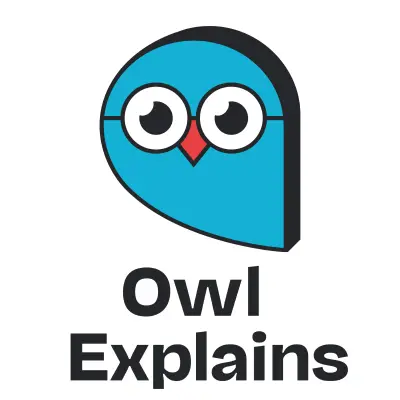
The Owl Explains Hootenanny
62 episodes Last Updated: Apr 23, 25
Owl Explains is a proud project of the Ava Labs Legal team that is committed to helping policymakers break through hype and navigate the blockchain world. Owl Explains hosts podcasts with industry leaders seeking to build a better Internet. Check out our X profile @OwlExplains, and visit our website owlexplains.com, where you will find practical explainers, quizzes, and more fun resources on all things Web3.
To stay in the know, subscribe to News from the Nest
Episodes
What if your AI assistant could explain complex crypto laws in plain English—and connect you with an actual expert if things got tricky? That’s the idea behind Crystal, built by lawyer and founder Joni Pirovich. We talk about the chaos of compliance, the myth of AI replacing lawyers, and why this tool could change the game.Discover more: https://www.cryptococounsel.com
Apr 15, 2025
Ep 47: US Rep. William Timmons (R-SC)
With stablecoin and market structure bills moving fast, and NFTs waiting in the wings, Rep. William Timmons explains how 2025 could finally bring clarity, credibility, and competitiveness to digital assets. From reshoring innovation to rethinking how government spends money, he walks us through the big vision—and the even bigger questions—behind America’s crypto comeback.
Apr 08, 2025
Ep 46: Chairman Glenn Thompson
US House Agriculture Chairman GT Thompson breaks down what blockchain has to do with wheat futures, GPS networks, and bipartisan cooperation. He shares how Congress is handling blockchain’s regulatory gray zones through committee cooperation and public input. It’s a grounded discussion of what’s being built, what’s still unclear, and why it matters.👓 Read "A Blueprint for Digital Assets in America" co-written by Representatives French Hill and Glenn Thompson.
Mar 19, 2025
Ep 45: DeFi's Big Questions Answered
Is DeFi truly decentralized? Is it more than just finance? Join Yvette Valdez (Latham & Watkins), Diana Barrero Zalles (GBBC), Joe Cutler (Perkins Coie), and Lee Schneider (Ava Labs) as they discuss DeFi’s opportunities, risks, and more.
CFTC Commissioner Summer Mersinger and Sidley Austin’s Kate Lashley discuss the evolving landscape of digital assets regulation in the US. Discover how the CFTC aims to bring crypto onshore through balanced, innovation-friendly policies.
[in Vietnamese] Ms. Nguyen Thi Ngoc Dung (Vietnam’s National Innovation Center) discusses how to foster Web3 growth, support businesses, and leverage blockchain for banking, logistics, and smart cities in Vietnam. English transcript available in owlexplains.com
Dec 11, 2024
Ep 43: Are Stablecoins the Future of Money?
Join renowned author David Birch in this express podcast, as he unpacks the rise of stablecoins, their transformative impact on global finance, and what they mean for the future of money. From geopolitics to financial inclusion, Birch offers sharp insights into how stablecoins are shaping the digital currency landscape and how they're more than "just digital dollars."
Stephen Buttolph (Chief Protocol Architect at Ava Labs) discusses how Avalanche's blockchain can be used for tokenization of real-world assets. The podcast also explains the Avalanche consensus protocol and how this protocol is an important differentiator between Avalanche and other blockchains.Learn more: https://www.avax.network/
Professor Ciamac Moallemi (Columbia University) dissects Maximal Extractable Value (MEV), Loss-Versus-Rebalancing (LVR) and associated mitigation methods. To provide more background, MEV is the economic value that can be extracted from blockchain users through arbitrage activity. Of particular note, arbitrageurs can extract value from liquidity providers at Decentralized Exchanges (DEXs) where these losses are known as Loss-Versus-Rebalancing (LVR). After explaining both MEV and LVR, this podcast focuses on mitigation methods including expedited block times and auction mechanisms intended to extract MEV.Paper: Automated Market Making and Arbitrage Profits in the Presence of Fees
Mallesh Pai (Rice University) covers DEX Aggregators and Solvers. In more detail, DEXs are not isolated entities. Rather, a variety of "intents markets" have arisen (e.g., Uniswap X, CoW Swap) where users can express "intents" to trade and then these markets execute the intents by relying on DEX liquidity and also potentially other sources of liquidity (e.g., fillers). Intents markets are generally classified as aggregators or solvers, and this podcast explains the space of intent markets, clarifying the distinction between aggregators and solvers. The podcast particularly focuses on economic implications of intents markets. An important point is that assertions that these markets are likely to entail favorable outcomes for traders are not necessarily correct due to the underlying economic structure.Paper: An Analysis of Intent-Based Markets